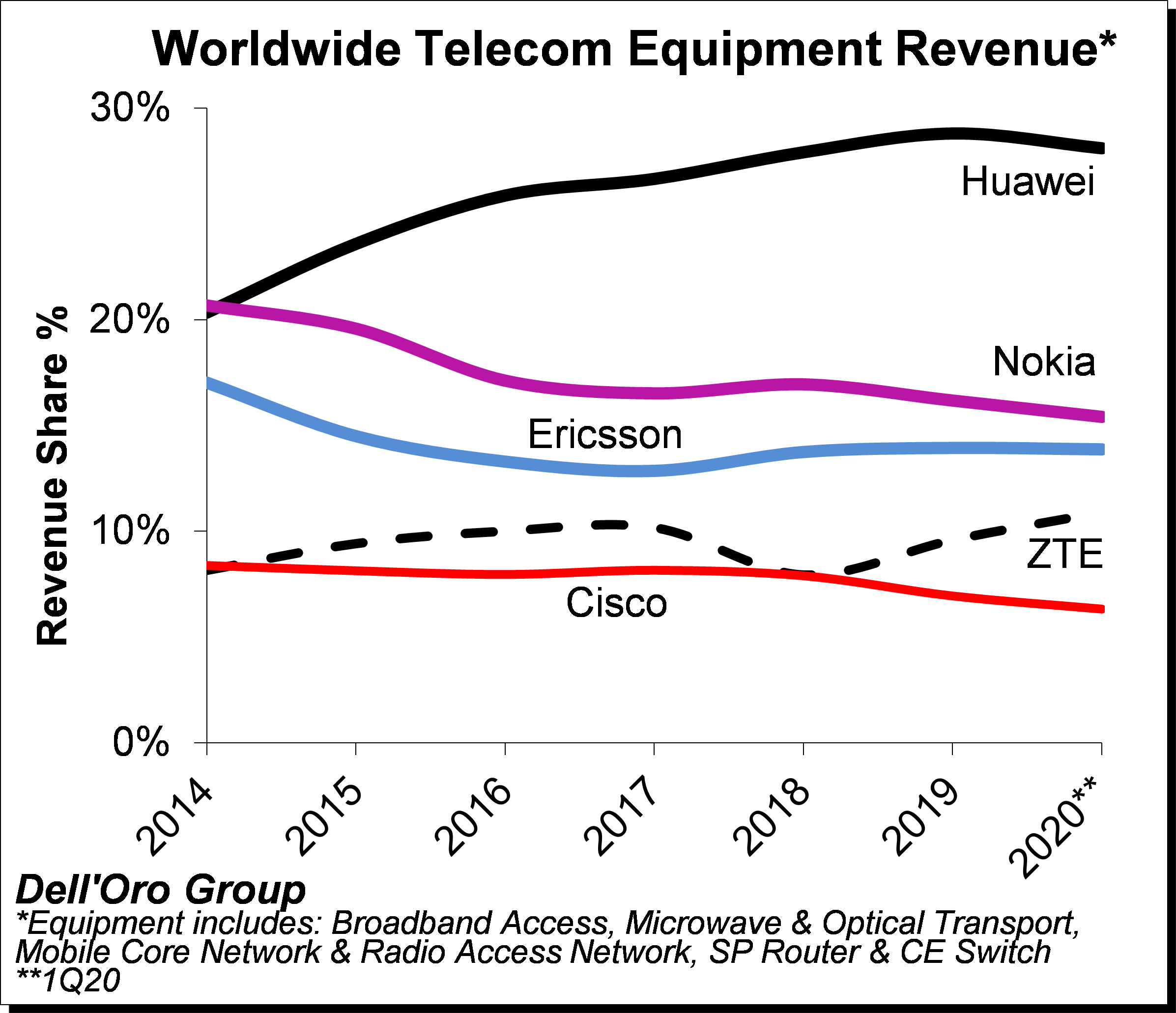 We just finished our Mobile Core Network (MCN) five-year forecast (2019 to 2024). The MCN forecast includes 4G and 5G packet core, policy, and subscriber data management network functions, as well as the IMS Core. Here are some of the highlights from the forecast:
We just finished our Mobile Core Network (MCN) five-year forecast (2019 to 2024). The MCN forecast includes 4G and 5G packet core, policy, and subscriber data management network functions, as well as the IMS Core. Here are some of the highlights from the forecast:
- 5G SA networks with 5G Cores are expected to launch during the second half of 2020. Regionally, China and South Korea will lead the way, followed by the US, Western Europe, and the Middle East.
- MCN revenues are projected to grow 8% per year over the next five years with the move to 5G Standalone (5G SA).
- The cumulative revenue investments from 2020 to 2024 in 5G MCN functions are expected to be 20% of the combined investments in 4G and 5G MCN functions.
- 4G MCN revenues are estimated to peak in 2022 and decline thereafter as the move to 5G SA accelerates.
- MCN revenues Y/Y growth rates will fluctuate as different parts of the world deploy 5G SA at various times.
- Technology is beginning to transition from virtual machine servers with virtual network functions, to bare-metal servers with container-based cloud-native network functions. The total cost of ownership savings is expected to be 30% over time, with the added benefit of reduced complexity.
- As expected, the cumulative revenues for 5G MCN in the Asia Pacific will represent the largest regional share, led by service providers in China.
Over 70 SPs are now providing 5G coverage with the 5G NSA architecture. The size of 5G SA deployments in 2020 is uncertain at this time and could impact the forecast. Also, the transition from 5G NSA to 5G SA could affect the product mix between 4G and 5G network functions, though the overall size of the market would be the same.
Other factors that could impact the forecast include further price erosion than assumed, brought on by competition, not only by the incumbents, but by startups trying to break into the market, or by Cloud SPs vying for SPs to host their MCN network functions on their servers; the aggressiveness of MEC (Multi-Access Edge Computing) and FWA (Fixed Wireless Access) deployments; and the number of 5G Cores built per SP, such as dedicated 5G Cores for the consumer market, the enterprise market, and the mission-critical markets, such as public safety. Examples already exist in the LTE world, with numerous private LTE networks for enterprises, dedicated EPCs for public safety by AT&T and Verizon in the US, and separate cores for MVNOs. China Mobile and China Unicom have already awarded vendor contracts to build separate 5G Cores to serve both consumers and enterprises.
To learn more about the options service provider have to transition to the 5G Core, please see my previous blog, 5G Core – Are We Ready?
Dell’Oro Group’s Mobile Core Network 5-Year Forecast Report offers a complete overview of the market for Wireless Packet Core, IMS Core, policy, and subscriber management with historical data, where applicable, to the present. The report provides a comprehensive overview of market trends by network function implementation (Non-NFV and NFV), covering revenue, licenses, average selling price, and regional forecasts for various network functions. Click here to learn more about the report or contact us (dgsales@delloro.com) for the full report.
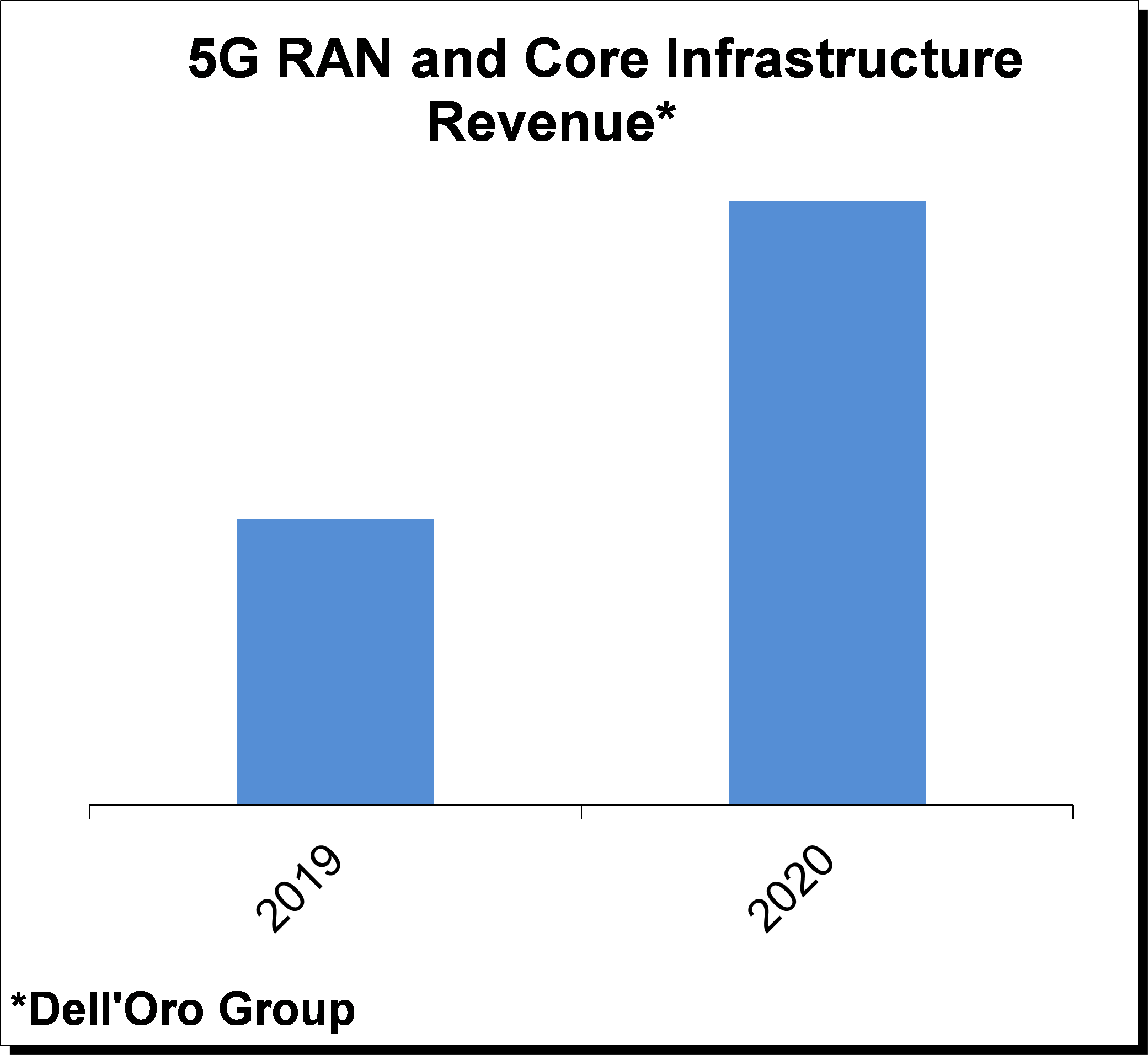 With 5G deployments now accelerating at a torrid pace and 5G NR investments projected to comprise 30% to 50% of global RAN investments in 2020 (Dell’Oro Group), operators are reassessing how to optimize their spectrum resources to capitalize on the potential business and technology benefits with 5G NR. Many countries are realizing the strategic importance of timely 5G deployments spurring governments and regulators to actively release/award 5G spectrum. Even with some minor spectrum auction delays as a result of Covid-19, countries that have auctioned or plans to award sub 6 GHz spectrum by year-end 2020 together comprise nearly 90% of worldwide GDP. At the same time, the amount of spectrum and the type of spectrum that is available varies widely across the globe, prompting operators to effectively capitalize on their respective spectrum assets to build 5G networks with optimal experience.
With 5G deployments now accelerating at a torrid pace and 5G NR investments projected to comprise 30% to 50% of global RAN investments in 2020 (Dell’Oro Group), operators are reassessing how to optimize their spectrum resources to capitalize on the potential business and technology benefits with 5G NR. Many countries are realizing the strategic importance of timely 5G deployments spurring governments and regulators to actively release/award 5G spectrum. Even with some minor spectrum auction delays as a result of Covid-19, countries that have auctioned or plans to award sub 6 GHz spectrum by year-end 2020 together comprise nearly 90% of worldwide GDP. At the same time, the amount of spectrum and the type of spectrum that is available varies widely across the globe, prompting operators to effectively capitalize on their respective spectrum assets to build 5G networks with optimal experience.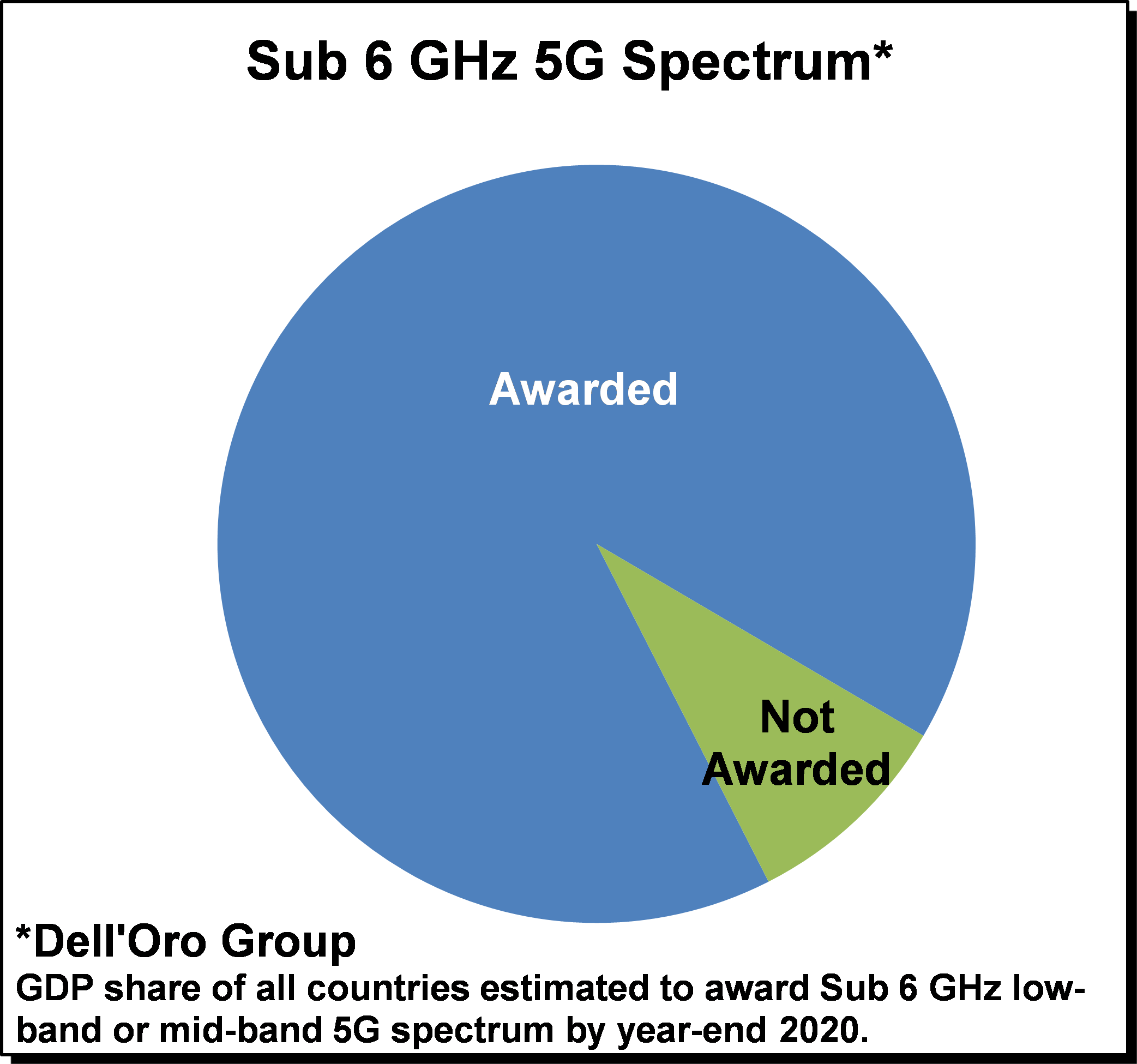 One of the more compelling features with 5G in addition to the increased spectrum bandwidth that comes with the upper mid-band and the mmW spectrum is the fact that 5G NR offers spectral efficiency improvements on a like for like basis relative to LTE, implying that operators and eventually enterprises can take advantage of these efficiency benefits regardless of their current spectrum portfolio. And in contrast to previous mobile technology transitions, new technologies such as dynamic spectrum sharing, dual connectivity and carrier aggregation across multiple technologies will provide the necessary tools to simplify and accelerate the migration from LTE to 5G NR. This improved flexibility taken together with the efficiency and performance upside with 5G NR plays an important role in the improved market sentiment that has characterized the RAN market in this initial 5G mobile broadband (MBB) deployment phase. While having the right mix of spectrum remains extremely important, the relatively seamless transition enables operators to put parts of the spectrum to use today. It does not matter if the spectrum is optimized for coverage or better suited for capacity or if an operator has a non-ideal portfolio mix of low-band, mid-band, or high-band spectrum. With 5G, operators now have the tools to capitalize on the benefits with the respective bands and put together a roadmap that migrates the portfolio in various phases from legacy 2G-4G to 5G NR.
One of the more compelling features with 5G in addition to the increased spectrum bandwidth that comes with the upper mid-band and the mmW spectrum is the fact that 5G NR offers spectral efficiency improvements on a like for like basis relative to LTE, implying that operators and eventually enterprises can take advantage of these efficiency benefits regardless of their current spectrum portfolio. And in contrast to previous mobile technology transitions, new technologies such as dynamic spectrum sharing, dual connectivity and carrier aggregation across multiple technologies will provide the necessary tools to simplify and accelerate the migration from LTE to 5G NR. This improved flexibility taken together with the efficiency and performance upside with 5G NR plays an important role in the improved market sentiment that has characterized the RAN market in this initial 5G mobile broadband (MBB) deployment phase. While having the right mix of spectrum remains extremely important, the relatively seamless transition enables operators to put parts of the spectrum to use today. It does not matter if the spectrum is optimized for coverage or better suited for capacity or if an operator has a non-ideal portfolio mix of low-band, mid-band, or high-band spectrum. With 5G, operators now have the tools to capitalize on the benefits with the respective bands and put together a roadmap that migrates the portfolio in various phases from legacy 2G-4G to 5G NR.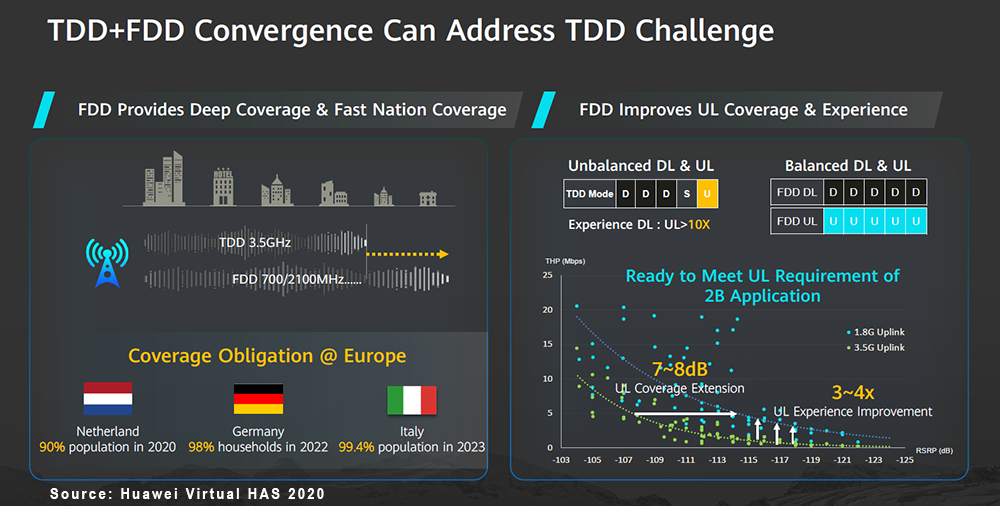
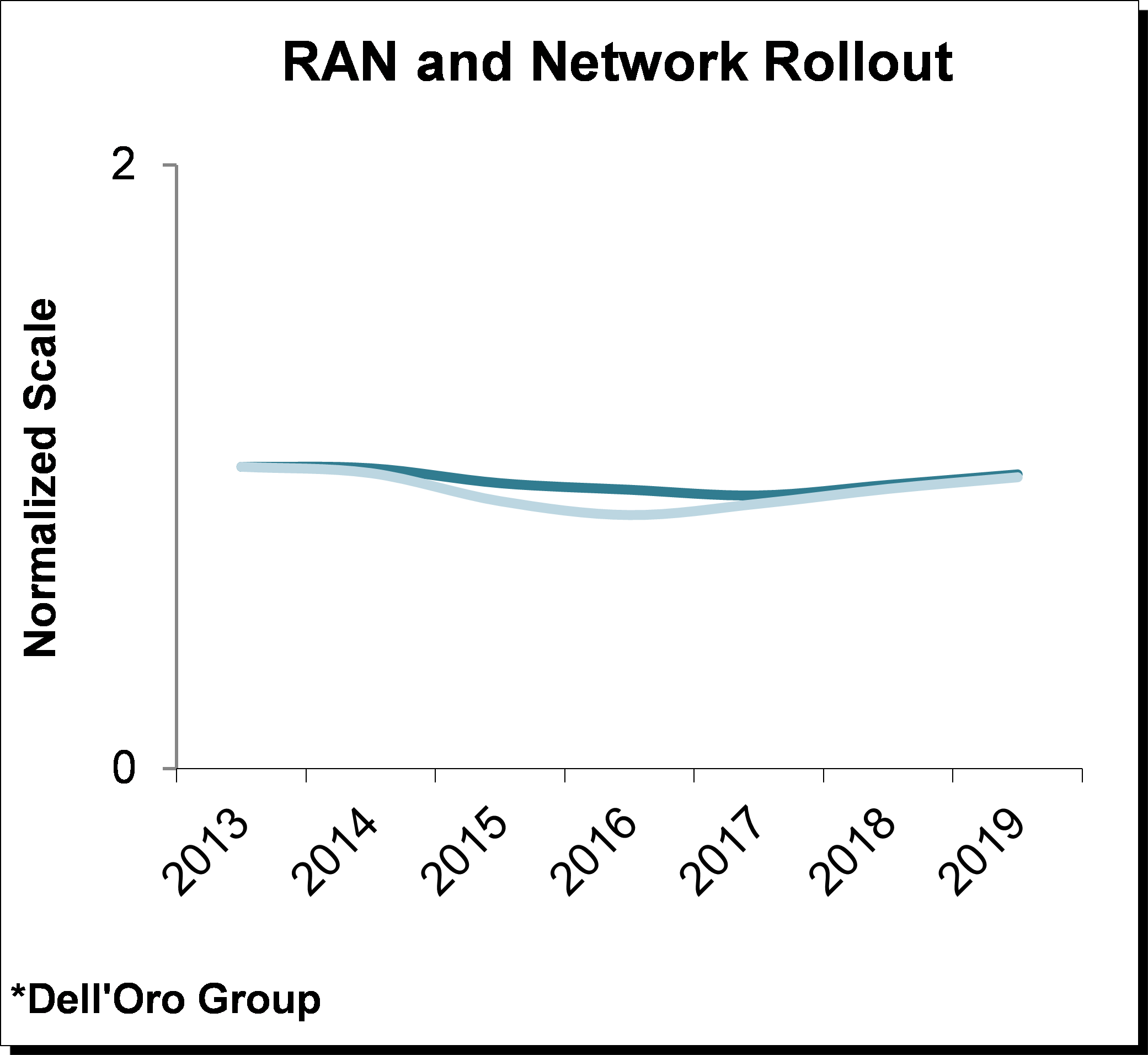 Given that there is a strong correlation between network services requirements and mobile broadband investments for the more simplified site deployments, this on-going shift towards multi technology sites including both legacy technologies and more complicated 5G solutions that could involve dynamic spectrum sharing and beamforming addressing a wider scope of use cases spanning across potentially multiple industries in combination with the increased site complexity and the need to focus on energy optimization will accelerate the shift towards more intelligent planning/design, operations and predictive analysis.
Given that there is a strong correlation between network services requirements and mobile broadband investments for the more simplified site deployments, this on-going shift towards multi technology sites including both legacy technologies and more complicated 5G solutions that could involve dynamic spectrum sharing and beamforming addressing a wider scope of use cases spanning across potentially multiple industries in combination with the increased site complexity and the need to focus on energy optimization will accelerate the shift towards more intelligent planning/design, operations and predictive analysis.
